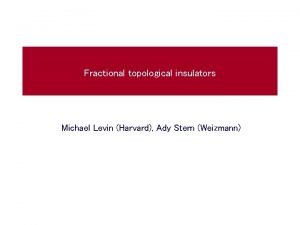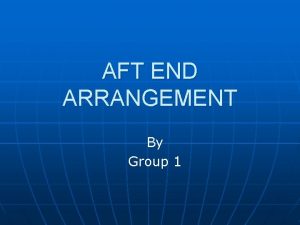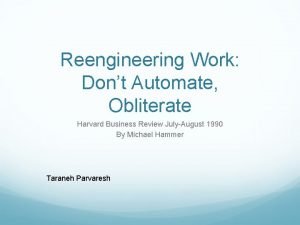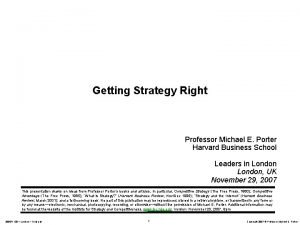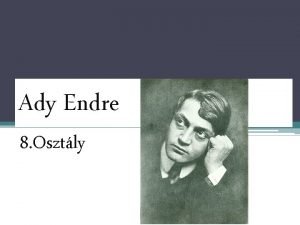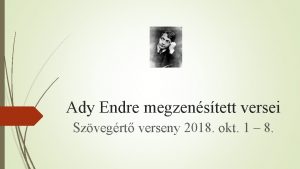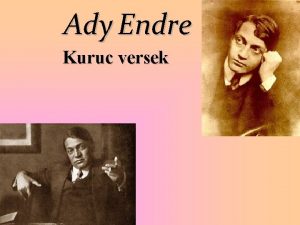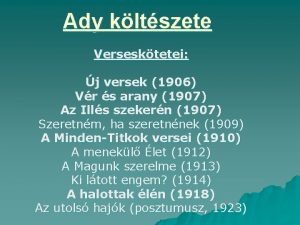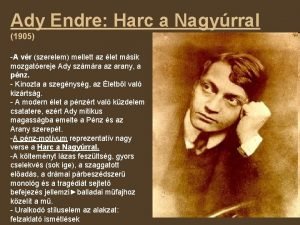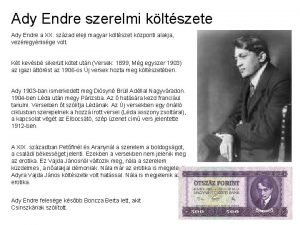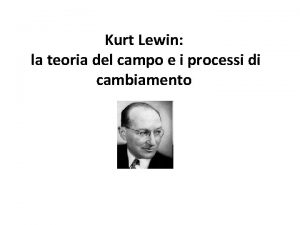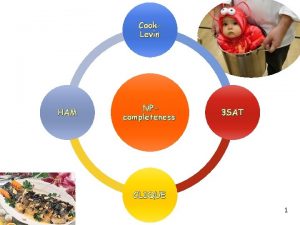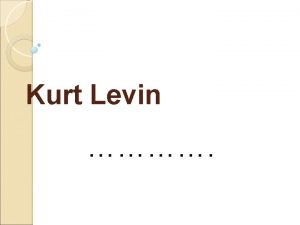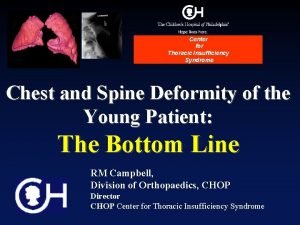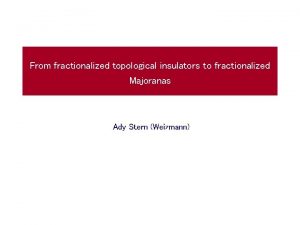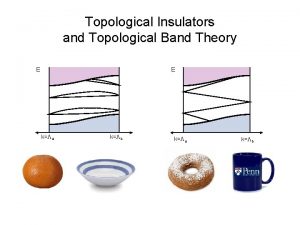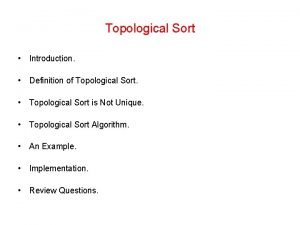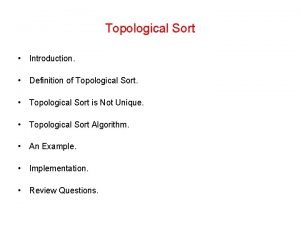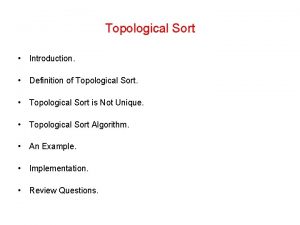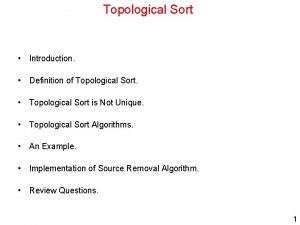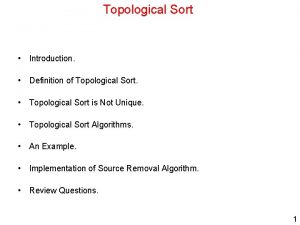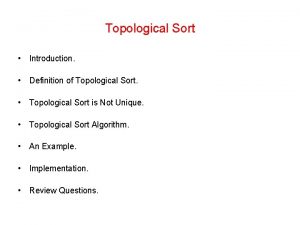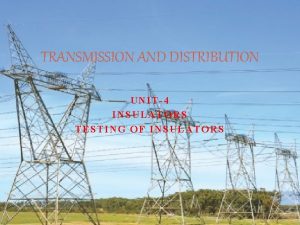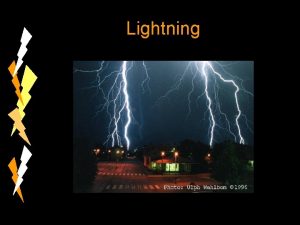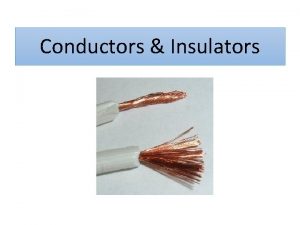Fractional topological insulators Michael Levin Harvard Ady Stern




















- Slides: 20

Fractional topological insulators Michael Levin (Harvard), Ady Stern (Weizmann)

Topological vs. trivial insulators (Zhang et al, Kane et al) Non-interacting fermions in a 2 D gapped system (energy bands, Landau levels…) (Thouless et al, Avron et al) • An integer index – the Chern number, • Transition between different Chern numbers requires closing the energy gap. • ( ) Gapless edge states on the interface with a vacuum. Refinement: Impose time reversal symmetry (i. e. , ), • Two types of bands – trivial insulators and topological insulators. • No transition between the two classes unless either a. the gap closes or b. time reversal symmetry is broken

A useful toy model – two copies of the IQHE Red electrons experience a magnetic field B Green electrons experience a magnetic field -B n=odd per each color – a topological insulator n=even per each color – a trivial insulator

With interactions, gapped systems are more complicated and have more quantum numbers. Several states may have the same sxy , but differ in other topological quantum numbers (e. g. , charge of quasi-particles, statistics, thermal Hall conductivity). A natural question – does time reversal symmetry introduce a distinction between “trivial” and “topological” classes for interacting systems?

The modified toy model – two copies of the FQHE n fractional per each color, artificial type of interaction. Two quantum numbers characterizing a fractional state: n– the (spin) Hall conductivity e* - the smallest charge allowed for an excitation The question – can the edge states be gapped out without breaking time reversal symmetry ? The answer is determined by the parity of n/e*: Even –Yes Odd - No

Two ways to analyze this question: 1. A flux insertion argument 2. A microscopic calculation – 1. Write down the edge theory. 2. Look for perturbation(s) that gap(s) these 2 n gapless modes without breaking time reversal symmetry. 3. (Haldane’s topological stability)

Flux insertion argument – non-interacting case (Fu&Kane) spin-ups spin-downs Turn on a in the hole. • A spin imbalance of ±n (integer number) is created on each edge. • Two states that are degenerate in energy and time reversed of one another. Can they be coupled? Yes, if the imbalance is even. No, if it is odd. So, no edge perturbation will lift the degeneracy and open a gap without breaking time reversal symmetry.

For fractional quantum spin Hall states spin-ups spin-downs • Half a flux quantum leaves the edges coupled. • We need to insert the flux needed to bring each edge back to the topological sector from which it started. • The number of flux quanta needed for that is 1/2 e*. • The imbalance is then n/e*. It is the parity of this number that determines the protection of the gap.

A microscopic calculation The unperturbed edge, two copies of the QHE: (Wen…) The Integer case:

The double-FQHE unperturbed edge (N modes each color):

Perturbations: The perturbation: a. Charge conserving b. Possibly strong (“relevance is irrelevant”) c. So is the relevance to experiments (apologies!) d. No conservation of momentum, spin Symmetry with respect to time reversal – a crucial issue

Perturbations: l is an integer vector To conserve charge The number of flipped spins The time reversal operator: A time reversal symmetric perturbation:

We look for a set of l’s that will gap the edge modes Start from the double Laughlin state (N=1) Perturbation: j=1: Zeeman field in the x-direction j=2: electron-electron interaction

The perturbation gaps the two gapless modes, but 1. For j=1 it explicitly breaks time reversal symmetry 2. For j=2 it spontaneously breaks time reversal symmetry, giving an expectation value to It is impossible to gap the two modes without breaking symmetry to time reversal – a topological fractional insulator For N=1, always n/e*=1

Now for two edge modes in each direction (N=2). Most generally: b, s, u, v – integers. u and v have no common factors. The answer: gapping is possible for even (u+v) impossible without TRS breaking for odd (u+v)

The method: transform the problem into two decoupled Luttinger liquids, and then gap them, with two perturbations. Even (u+v): The two required vectors are Each of the two vectors flips (u+v)/2 spins. Second order splits the degeneracy. No spontaneous breaking of time reversal symmetry. Odd (u+v): flipping (u+v) spins necessarily break time reversal symmetry by giving an expectation value to

Can a trivial insulator change to a topological insulator without the gap being closed, but with breaking of time reversal symmetry? For the “Integer topological insulator” – yes For the fractional – more difficult, since the charge e* cannot change without the gap closing. The answer: If 1/e* is odd – yes. If 1/e* is even – no. Why? a relation between and

• q flux quanta (quanta of vorticity) in each – topologically trivial • p units of charge in each • Statistics – bosonic if p even, fermionic if p odd The phase of interchange So, parity of p must equal parity of pq

The phase of interchange So, parity of p must equal parity of pq p odd q even p even only trivial insulators (By passing – this implies that a n=5/2 state must have quarter charged excitations in its spectrum)

Summary: 1. Gapless edge modes in “fractional spin Hall insulators” are protected in the case of odd n/e*, as long as time reversal symmetry is preserved. 2. These modes may be gapped by spin flipping perturbations when n/e* is even.
 Ady stern
Ady stern Cruiser stern and transom stern
Cruiser stern and transom stern Michael luca harvard business school
Michael luca harvard business school Michael hammer 1990
Michael hammer 1990 Michael porter harvard professor
Michael porter harvard professor Ady endre 8. osztály
Ady endre 8. osztály Ady fy
Ady fy Ady álneve
Ady álneve Ady hershcovitch
Ady hershcovitch Ady endre kuruc versek
Ady endre kuruc versek Ady verseskötetei
Ady verseskötetei Endre ady
Endre ady Ady endre harc a nagyúrral
Ady endre harc a nagyúrral żubr ile sylab
żubr ile sylab Héja domonkos felesége
Héja domonkos felesége Campo lewin
Campo lewin Sonda nasoyeyunal
Sonda nasoyeyunal Levin ham
Levin ham Kurt levin
Kurt levin Jarcho-levin syndrome pictures
Jarcho-levin syndrome pictures Hal levin
Hal levin
